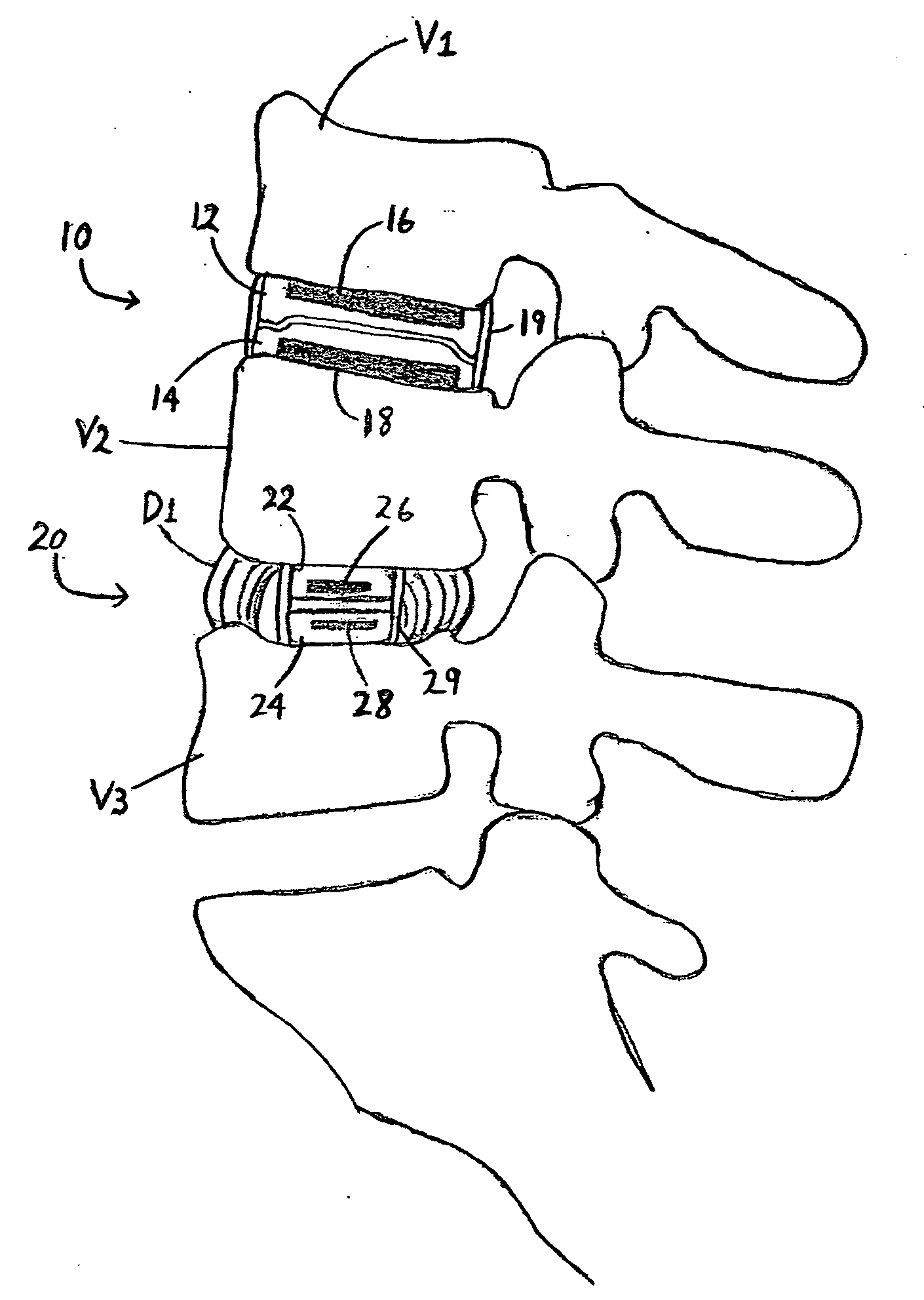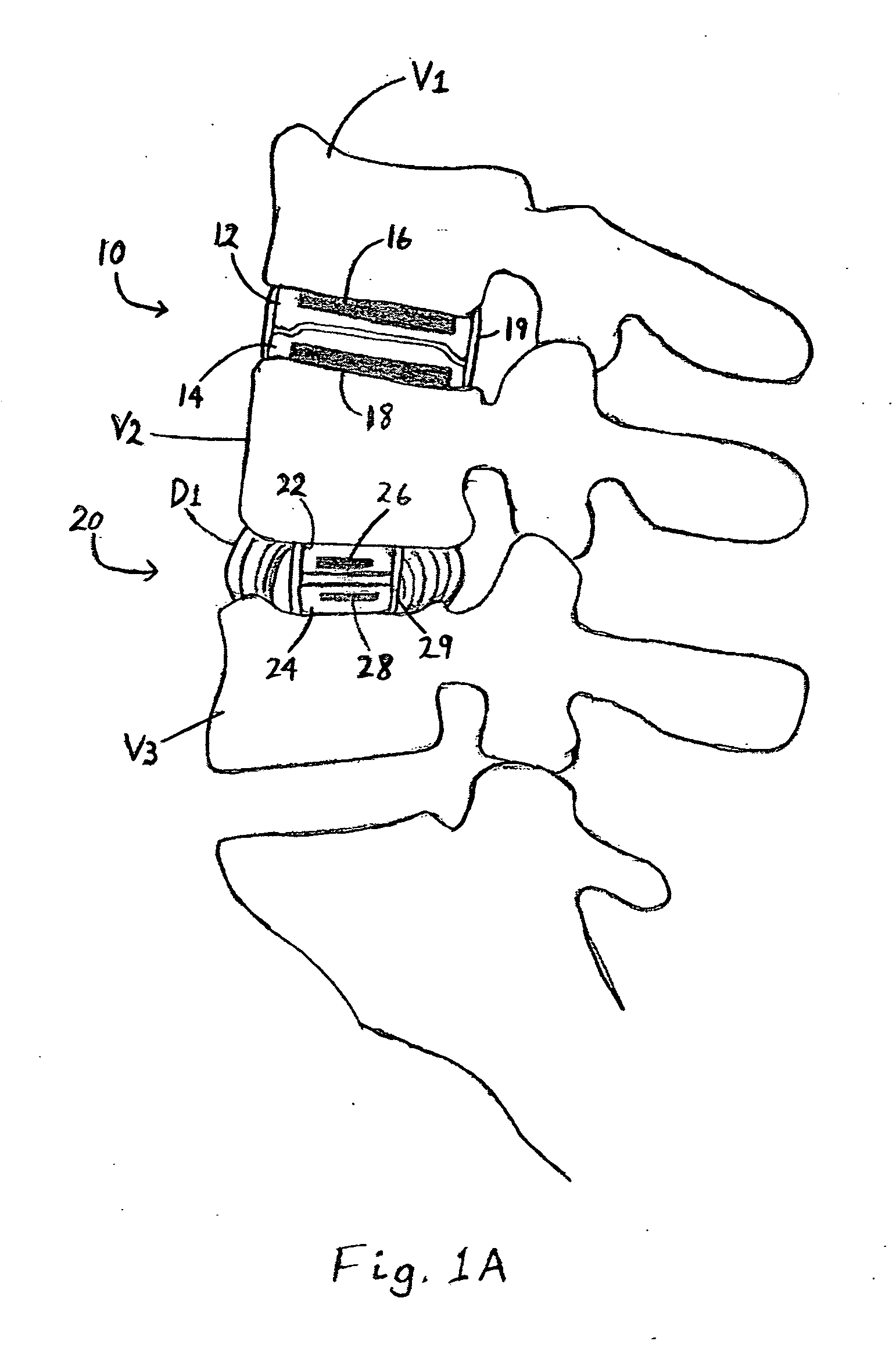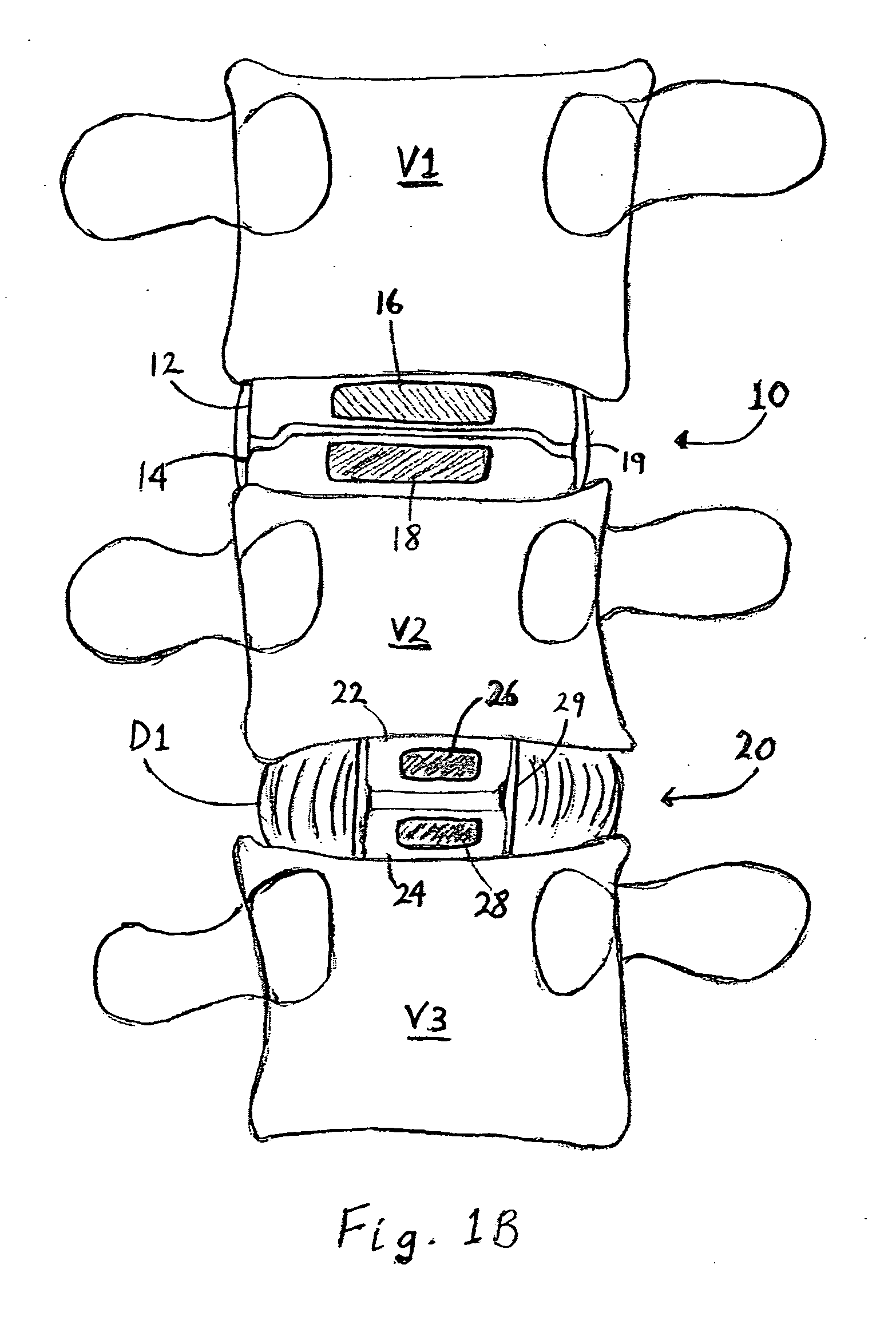Magnetic spinal implant device
a magnetic spinal and implant technology, applied in the field of magnetic spinal implants, can solve the problems of not providing any “cushion” or “shock absorption” to relieve axial pain, affecting the stability of spinal bones that the implants are attached to, and affecting the patient's recovery, etc., and achieves the effect of rapid turning on and off or manipulating
- Summary
- Abstract
- Description
- Claims
- Application Information
AI Technical Summary
Benefits of technology
Problems solved by technology
Method used
Image
Examples
Embodiment Construction
[0042]The invention is described in detail below with reference to the figures, wherein like elements are referenced with like numerals throughout. It should be understood that the figures are not necessarily drawn to scale. Rather, they are intended to show certain features and elements of various exemplary embodiments of the invention.
[0043]FIG. 1A illustrates a cross-sectional side view of a patient's spine having two magnetic intervertebral disk implants 10 and 20 implanted therein. The implants 10 and 20 are illustrated together for purposes of discussion only and need not be used together in actual applications. The magnetic implant 10 is designed to replace the entire disk between vertebras V1 ad V2 and includes a first piece 12 configured to be secured to first vertebral body V1 and a second piece 14 configured to be secured to second vertebral body V2. Each of the first and second pieces 12 and 14 can be secured to their respective vertebral bodies using known means and tec...
PUM
 Login to View More
Login to View More Abstract
Description
Claims
Application Information
 Login to View More
Login to View More - R&D
- Intellectual Property
- Life Sciences
- Materials
- Tech Scout
- Unparalleled Data Quality
- Higher Quality Content
- 60% Fewer Hallucinations
Browse by: Latest US Patents, China's latest patents, Technical Efficacy Thesaurus, Application Domain, Technology Topic, Popular Technical Reports.
© 2025 PatSnap. All rights reserved.Legal|Privacy policy|Modern Slavery Act Transparency Statement|Sitemap|About US| Contact US: help@patsnap.com



